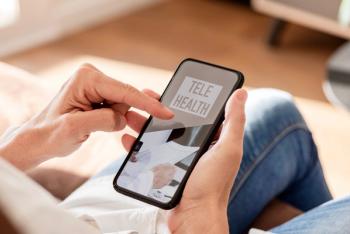
The Doctor-Technology Relationship
Healthcare information technology has ushered in a new era in medicine in which the doctor-patient relationship is taking a backseat to the doctor-technology relationship.
Healthcare information technology has ushered in a new era in medicine in which the doctor-patient relationship is taking a backseat to the doctor-technology relationship, as many physicians find themselves diverting time away from the patient to deal with poorly designed EHR systems. Of course, the ultimate goal of healthcare technology is to improve patient care delivery, but EHR usability factors are impeding progress and threatening widespread acceptance of new technology.
As I watch my cat entertain himself playing with an app on the iPad, while I, too, jump from app to app on my iPhone, I wonder why EHR systems weren't designed to be as easy to use as many of the applications we encounter on a daily basis. I've even asked myself: WWJD (What would Jobs do)? Imagine if EHR systems were designed using the same standards as Steve Jobs - the usability guru - applied to all of his phenomenally successful products. Typically, end user ease-of-use and productivity are the primary goals of software designers, so why are EHR systems so onerous? Although the answer is complex, it may surprise everyone (and no one) that end-user usability was not a top design requirement as EHR software developers rushed to deliver systems to meet Affordable Care Act requirements.
To rectify the usability problem, the AMA recently announced a framework of eight usability priorities. One priority calls for expediting user input into product design and post-implementation feedback. As physicians whose livelihoods now depend on a healthy doctor-technology relationship, now is the time to influence EHR usability. As a healthcare IT consultant, I am often asked how providers can influence product development. One method I advise my clients to implement is a simple online "help desk" communication system between healthcare providers and their IT group, which allows providers to report problems, ask questions, or recommend improvements. In addition, the system can be a communication vehicle to dispense information about meaningful use requirements, system updates, etc. Information gathered by the system can also be used as input to EHR product developers.
Besides the cumbersome data entry/usability issues, information retrieval is proving to be a roadblock for many physicians as they attempt to utilize the data they have collected. A recent analysis from Frost & Sullivan, "EHR Usability - CIOs Weigh In on What's Needed to Improve Information Retrieval," indicates that the problem is expected to get worse. The report suggests a lack of technology - not end-user ability -is preventing adequate data retrieval. It is believed, however, that as U.S. regulatory authorities focus on the vast complaints about EHR usability, there will be a surge in functionality development by current and new vendors. This renewed focus is a prime opportunity for healthcare providers to inject much needed end-user experience into the development process.
As new, user-friendly systems are introduced into the healthcare IT marketplace, perhaps the usability and end user experiential data could be published in a forum to allow healthcare providers a means to compare systems. I have long envisioned an independent mechanism akin to "UL Approved" or Consumers Digest to provide critical comparative data on healthcare IT software applications. Ultimately, physicians and technology must form a symbiotic relationship that returns our focus to the patient.
Mary Christ, MD, MBA, a former technology executive, is a freelance healthcare IT consultant and member of the Physicians Practice Physician Advisory Board. Do you have the opportunity to contribute input on your practice EHR? Tell us at
This article originally appeared in the January 2015 issue of Physicians Practice.
Newsletter
Optimize your practice with the Physicians Practice newsletter, offering management pearls, leadership tips, and business strategies tailored for practice administrators and physicians of any specialty.










